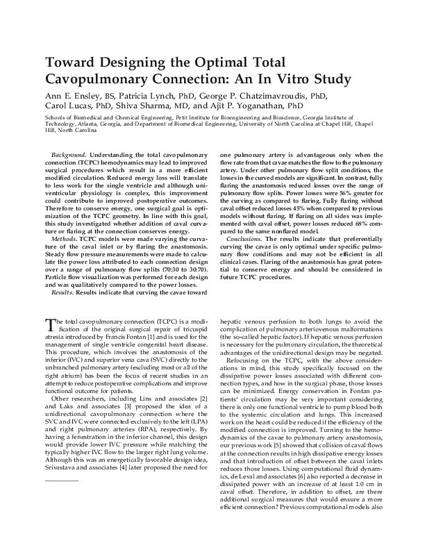
Background. Understanding the total cavopulmonary connection (TCPC) hemodynamics may lead to improved surgical procedures which result in a more efficient modified circulation. Reduced energy loss will translate to less work for the single ventricle and although univentricular physiology is complex, this improvement could contribute to improved postoperative outcomes. Therefore to conserve energy, one surgical goal is optimization of the TCPC geometry. In line with this goal, this study investigated whether addition of caval curvature or flaring at the connection conserves energy.
Methods. TCPC models were made varying the curvature of the caval inlet or by flaring the anastomosis. Steady flow pressure measurements were made to calculate the power loss attributed to each connection design over a range of pulmonary flow splits (70:30 to 30:70). Particle flow visualization was performed for each design and was qualitatively compared to the power losses.
Results. Results indicate that curving the cavae toward one pulmonary artery is advantageous only when the flow rate from that cavae matches the flow to the pulmonary artery. Under other pulmonary flow split conditions, the losses in the curved models are significant. In contrast, fully flaring the anastomosis reduced losses over the range of pulmonary flow splits. Power losses were 56% greater for the curving as compared to flaring. Fully flaring without caval offset reduced losses 45% when compared to previous models without flaring. If flaring on all sides was implemented with caval offset, power losses reduced 68% compared to the same nonflared model.
Conclusions. The results indicate that preferentially curving the cavae is only optimal under specific pulmonary flow conditions and may not be efficient in all clinical cases. Flaring of the anastomosis has great potential to conserve energy and should be considered in future TCPC procedures.

We acknowledge the financial support of the American Heart Association, Georgia Affiliate and the National Institutes of Health grant number R01 HL-52799.